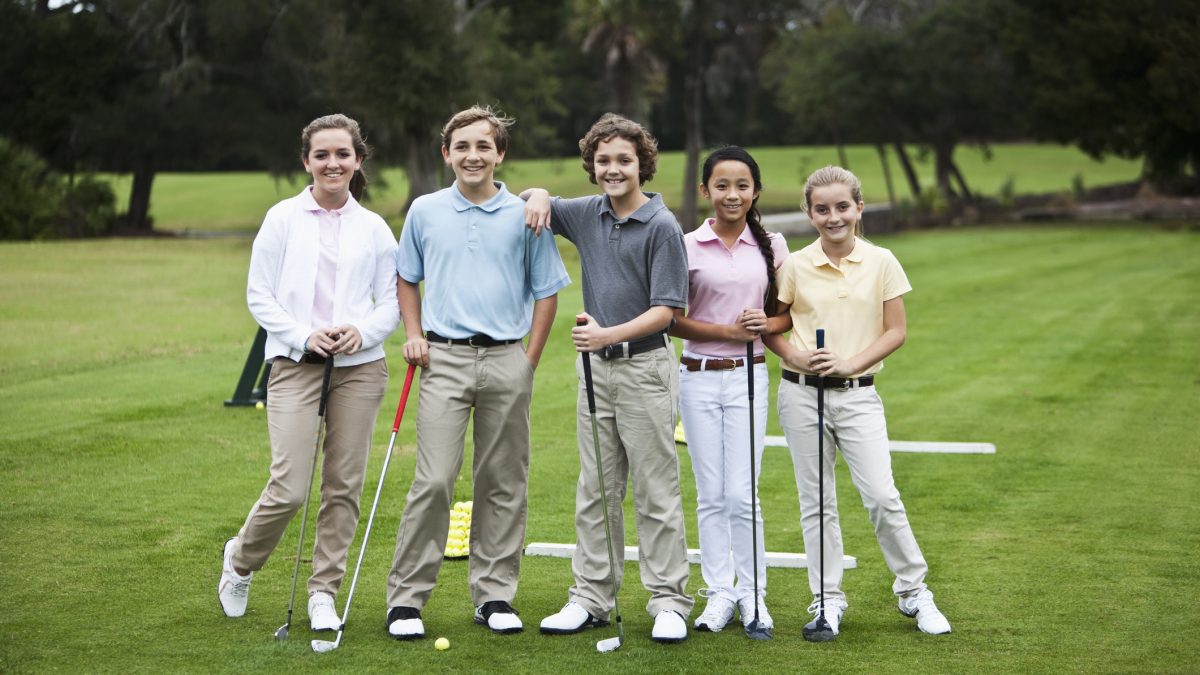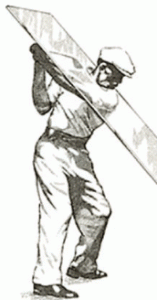Blog
Editorial: Don’t Forget the Ball
I Tested It: Equipment Beliefs
We’ve all heard teaching pros and regular golfers alike expound on and repeat beliefs regarding golf equipment: “Regular shafts go longer than stiff shafts, but stiff shafts are straighter”…“Tour balls are shorter than ‘distance’ balls,” etc.
There are a number of equipment beliefs and sayings that are taken as gospel. Some are grounded in sound science, while others may be more anecdotal. Being naturally curious about this, I decided to test some of them out. Keeping in mind that I am not a robot, I tried to introduce some sort of consistency in each of the tests I did so that they, while not being perfectly scientifically precise, will allow some real-world insight into how equipment differences affect a real person.
Belief: Tour balls spin more than distance balls
Tour golf balls are made with softer urethane covers, while distance balls have firmer ionomer covers, usually consisting of Surlyn®. (As a side note, golf balls back in the day were often marketed as having Surlyn covers, but the material became associated with hardness, so the term “ionomer” is used today.) They may also differ in core construction and material. I tested the belief that tour balls spin more than distance balls. For this test, I hit balls with a 56° wedge and all balls landed between 51-55 yards, using a GC Quad launch monitor. Only solid strikes were recorded, three shots each.

Conclusion: The two tour balls, the Callaway Chrome Soft and Bridgestone BX, had the highest spins rates, which was to be expected. The Bridgestone e6 Speed and Callaway Superhot, the distance balls, had lower spin rates, but surprisingly, the Superhot had a spin rate very comparable to the premium tour balls. I hit the Superhot three more times to see if this was some sort of aberration, but came up with similar results. There are likely other balls considered “distance” balls that also offer good spin on wedges.
Belief: Clubs with regular shafts go farther than clubs with stiff shafts
For this test, I used a Titleist AP2 7-iron and a Ping G400 Max driver to test both iron and driver shafts. I used the stock True Temper AMT White shaft for the iron test and a Ping G400 Max 10.5° with the stock Alta shaft. Three solid shots with each shaft were recorded. Results of the iron test:
For the driver test, I made sure my clubhead speed was between 94-95 mph each time, again using three solid strikes for each shaft.
Conclusion: There were virtually no differences in performance between the iron shafts. The peak height of the balls for both shafts was identical, 31 yards. There was also no difference in dispersion, either. As for the driver test, my swing speed averaged 94.9 mph with the stiff shaft and 94.5 with the regular. The stiff shaft’s ability to lessen backspin was the main factor in increased distance. Why there was a difference here and not in the iron shafts is something on which I can only speculate.
Belief: Lower-kickpoint shafts launch the ball higher than higher-kickpoint shafts
Here, I used the same Titleist AP2 7-iron with an AMT Red shaft, which is the lowest kickpoint shaft in the AMT family, while the White (used in the previous test) is the highest.
Conclusion: Surprising! The shaft with the lower kickpoint actually launched lower and with less spin than the higher kickpoint shaft. But again, I am not a robot, although I felt like I made similar swings with each shaft. The shaft did produce a higher ball speed and lower backspin, and thus more distance.
Belief: Choking down on the grip reduces distance
Choking down on the grip lessens the swing radius and theoretically should result in lower clubhead speed and distance. Using the Ping driver with the stiff shaft, I choked down 1 ̋.
Conclusion: Choking down does indeed result in a loss of clubhead and ball speed, but if control is gained, this may be a good tactic in given situations.
Belief: Distance balls go farther than tour balls
The driver tests already mentioned were conducted using a Callaway Chrome Soft ball. Because the Bridgestone e6 Speed spun noticeably lower in the wedge test, I used that ball for this test. I used the stiff shaft, and I made sure the three swings I used had a similar clubhead speed as with the above test to make sure I was testing the ball and not the club. (Please refer to the driver shaft test for tour ball data.)
Conclusion: Given similar ball speed and launch angle, the lower backspin literally carried the day for the distance ball, producing four more yards of carry distance.
Belief: Iron lie angles influence left-right ball dispersion
Iron lie angles that are too upright will result in a clubface that is aimed more closed, while iron lie angles that are too flat will result in a clubface angle that is more open. I used three different lie angles in this test with that being the only variable. I was drawing the ball this particular day, but I did manage to record three good shots with each lie angle.

Conclusion: Iron lie angles definitely affect the direction the ball takes because this is a geometric fact. Although it is theoretically ideal to have a lie angle that produces a flat clubhead to the ground at impact, some players may need to deviate from this to produce the desired ball flight.
Summary
These tests produced some results that conformed to long-held beliefs and some that did not. It is always good to question these beliefs and better yet, test them in a real-world setting. As we are all individuals with different reactions to the equipment in our hands, these results will not necessarily apply to every golfer we come across. It is quite possible – indeed likely – that another golfer will obtain different results than I did. This experiment shows that our students must test equipment before they buy…and we should, too.
Daily Junior Golf Clinics: Discover These New All-The-Rage Tactics To Teach Golf To Kids
 By Jordan Fuller, USGTF Contributing Writer
By Jordan Fuller, USGTF Contributing Writer
It’s important to the growth and continued success of golf to introduce children to the game in a way that allows them to enjoy it and succeed quickly. Golf can be a very difficult game to learn at any age, but kids are actually uniquely suited to understand and develop good swing habits. So, it’s incredibly important to make sure they’re having fun while learning the building blocks that will translate into a lifetime of fun and success on the golf course.
Here are a few tactics to make sure your junior clinics keep everyone entertained while teaching them important golf lessons!
Putting contests
The classic putting contest is still one of the best ways to foster friendly competition and teach kids the importance of getting the ball close to the hole on their first putts. However, a traditional method of simply pitting children head-to-head is best reserved for the last day of a clinic. Prior to that, the contests should be more individually focused, so kids can set a baseline of performance and improve on it through the week.
I like to use large rings to create a 2-3 foot circle around the hole, and set up “tees” for them to start from. You can also use strings on tees to guide them around the putting green on a specific “course.”
They’ll receive a point for getting the first putt inside the big circle, then three more points for making their second putt. If they actually hole the first putt, they get ten points. If they take three putts, they’ll get a single additional point. This scoring system where they accumulate points is easier to explain than trying to have them make a “par” of two or three on each hole. It also gives them a high number to shoot for the next time, and drives them to try the course again and again to achieve more points.
It’s also important to reward each child for their performance. While you can have a cool prize for the single highest point total, you can also give a reward (maybe a sleeve of balls or a towel) for improving their score, or making the most one-putts.
While “everyone gets a trophy” is often ridiculed, golf is a game that most of us play for fun. Sure, some of the kids may grow up to be tournament winners, but for most of them you’re trying to develop a lifelong love affair with the game. It’s important to reward improvement as much as achievement.
Individual instruction
When demonstrating a basic skill, such as a bump-and-run chip, it’s tempting to simply explain it and demonstrate it a few times before letting the kids loose to try it themselves. But while they’re out there working on it, take a few minutes with each child individually to lightly direct and heavily praise the job they’re doing.
With very young kids, too much technical input will just muddy the issue; it’s best to give them minimal direction (just enough to make sure they’re making half-decent contact) and praise their good instincts. For older kids (8 and up), you can start drilling down on fundamentals (such as how to hit the ball properly) to make sure they’re not developing any bad habits that will take years to undo.
This extra level of individual instruction and praise is what the kids will tell their parents about: “Coach Jones helped me with my chipping grip, and I won this sleeve of balls when I chipped one into the hole!” is much better feedback than “Billy and I got to play a lot of Fortnite.” One-on-one time is key to keeping kids engaged and letting their parents know that you’re really interested in developing their kids’ skills.
Once kids have been to a few clinics and are ready to hit the links, the PGA Junior League has great programs for innovative competitions and tournaments that appeal to particular ages and skill levels. Rather than sticking to traditional 18-hole stroke play formats, PGA Junior League tournaments have different scoring systems and are played on fewer holes. Kids learn about golf, but also teamwork and self-reliance. It’s a great program to move them from beginner clinics to championship golf.
The Vision Telescope
 By Norm Crerar, USGTF Contributing Writer Vernon, British Columbia
By Norm Crerar, USGTF Contributing Writer Vernon, British Columbia
I have been in the recreation business for over 50 years, both actively and lately as a consultant. Most of my time was spent in the ski industry as an active player and the golf industry a participant and consultant. I ski recreationally – and still do some teaching – and golf recreationally. As a result of my unique background, I have trouble just going out there with a clear mind just skiing or golfing. I am constantly looking around at what is out of place, asking myself why doesn’t someone fix this or adjust that, make a subtle change here or there that would give the visitors a better experience, or save the company some money. I love it! I am concerned, though, as both the ski industry and the golf industry are suffering from the same thing, declining numbers of participants. Some of this was due to the economy, but most is due to the Baby Boomers getting older or disappearing for health reasons. Shockingly, there are very few programs designed to get more people skiing and/or golfing more often.
Back in the 1970s, skiing had a program called GLM (Graduated Length Method). The clients started on very short skis on very gentle terrain, and as soon as they could turn the skis easily, they graduated to slightly longer skis and were taken to the top of the mountain, where they skied down a specially-tailored run that got them to the bottom quickly and safely. This was instant success for almost everyone. These thousands of people were the ones who bought the first condos at Vail and Whistler and allowed the ski industry to really take off. This same age group took up golf and found the time and money to take lessons, buy memberships, rent carts, hit thousands of range balls, find new and better equipment and buy resort properties. Both industries are now struggling to find new members and new markets.
Most of the early golf and ski resorts were started with a person or a few persons with a vision and little money. As the Baby Boomers passed through, both industries matured, the ski lift systems and grooming got better, and the golf courses were greener and opened earlier and closed later. Both were able to employ and train professionals, run things more efficiently, buy bigger and better equipment, add services, etc., but the prices started to rise and have continued to do so.
Now both the summer and winter resorts are heading in a difficult direction. Look at this as a triangle: The very few at the top do not care what the cost is; they pay their money and are off to play. The ones in the middle can afford to pay and play but decision time is around the corner; the many at the bottom will drop off at the next price rise, leaving the triangle smaller and with fewer people. Enter the accountants. Their training is to count beans. When the beans are black, they are happy. When the beans are red, they know only two things, raise prices and cut expenses (which means cutting services). People drop off the bottom line of the triangle. The triangle is now smaller. Cut expenses again. Smaller triangle, and on it goes. Sadly, this is where the “telescope” comes into the equation. For some reason, the accountant types have only been trained to look from the big end to the small end of a telescope and only see the very small picture, usually only the bottom line.
The USGTF was started with a vision born from necessity and opportunity. Looking from the other end of the telescope, your current president could only see the big picture, found a few like-minded people, offered some courses on learning how to teach golf, and the rest is history.
But the challenge remains. Both the golf industry and the ski industry need the same thing. They desperately need people to look out of the right end of the telescope and see the big picture and need to find ways of getting more people skiing and golfing more often. Doing nothing is hard, because you never know when you are finished.
What end of the telescope are you looking through?
When Adversity Strikes
Sometimes we are forced to play in adverse conditions, but this article isn’t talking about the weather. No, we are talking about something that is rarely spoken about except for perhaps at the 19th hole after the round – people who are difficult to play with.
Difficult playing partners run the gamut with all sorts of behavior. We can let it affect our own games or we can ignore it. Granted, ignoring certain behaviors can be quite hard to do, but if you or your students want to play your best, you’ve got to figure out a way to work your way through it.
Let’s keep in mind that, absent any sort of physical altercation or making noise in your routine or swing, what someone else does has no direct bearing on what we are doing. We can only let it affect us when we put a negative judgment on a person’s actions, as Hamlet stated. And once we make a negative judgment, it tends to get into our psyche and then, by definition, we are focused on that person and their behavior. When we’re trying to put up a score or just have fun on the golf course, that goes out the window when we do that.
As hard as it may be to not get upset with certain people or their actions, it is imperative that we stay in our own world when that type of adversity strikes. There are several types of difficult playing companions that all of us have encountered at one time or another:
 The Club Thrower
The Club Thrower
Let’s be honest. Most of us have tossed a club in the past. Rory McIlroy famously hurled his 3-iron into a lake at Trump Doral in Miami during the tournament, and other examples abound. Club breakers also fall into this category. But most of us either matured or realized that our stature in the game demanded a better showing of class, so we no longer do it. If we’re paired with a club thrower or breaker, instead of putting a negative spin on it at the time, we have two choices: to let it affect our game negatively or not. Of course, if the club thrower is firing clubs left and right and endangering others, this is not to be tolerated, and at that point we might have no choice but to get worked up about it. But most club throwers are only making fools of themselves, in the end.
 The Rules Expert
The Rules Expert
From anecdotal evidence, it appears women are more guilty of this than men. Stories about where a strict adherence to the Rules of Golf is demanded by the matriarch of the group, and even the most minor violations are met with great scorn and the figurative hammer. If you are the victim of a USGA and R&A wannabe, simply thank them for their information and move on. You’re not going to get them to change their ways, and just make it a point of not playing with them anymore. If they’re part of your regular group and this can’t be avoided, they’ve surely annoyed others, too. A group intervention should be convened for the sanity of all.
 The Golf Instructor
The Golf Instructor
You lifted your head” is something you may hear after you hit a poor shot, especially one that was topped, as if that was the sole cause of your poor shot. If keeping your head down was the magic secret to golf, there would be no need for real golf teaching professionals, and everyone could enjoy magical ballstriking for the rest of their lives. Even if you’re not taking lessons from a golf teaching professional (and plenty of teaching professionals take lessons from other instructors), just inform the person you’re working with so-and-so and you and your teacher/ coach are aware of the problem.
Some of us are extroverts; some of us are introverts. Some of us take time to warm up to people; some of us can be lifelong friends after five minutes. Some of us are serious on the course; some of us are fun seekers. Those who tend to be quiet can be very easily rattled by someone who is not, but rarely is vice versa the case. Jim Peters, the winner of the 2018 Harvey Penick Trophy for Excellence in Golf Teaching, said some of the best advice he ever received was that we have two ears and one mouth, so use them in proportion. If you’re paired with the Mouth of the South, let him or her ramble on. Or, with the acceptance of listening to music on the course these days, you can pop some ear buds in and tune them out.
This person thinks mainly of themselves, both through their words and actions. If you’re in the same cart and he’s driving, he’ll often drive right by your ball and go directly to theirs, nevermind that your ball is 30 yards back. Or, at the slightest hint of being in trouble, they make a beeline to their ball, all the time lamenting how he didn’t keep his head down or his left elbow straight. They keep up a running monologue of their game and sometimes their life. It can be exhausting to play with such a person, but remember that you’re not going to change who they are in one round of golf. As best you can, put your focus on something else, maybe the beauty of the course or the interesting design of your current hole.
People new to the game are not going to be very good. There are also some long-time players who aren’t very good, to put it mildly. If they keep it moving, fine. But if they insist on looking for every errant ball and refusing to pick up when they’re on their 10th stroke 100 yards from the green, you have every right to say something, even to the point of abandoning them and going ahead.
There is a difference between cheaters and rule breakers. Cheaters deliberately break the rules, while ordinary rule breakers do so unknowingly. If you’re simply playing a casual round, it’s not a big deal. However, if you’re in a tournament, it can, of course, become a very big deal. But surprisingly, it also may not be.
An example of the latter is a cheater or rule breaker whose score is not going to win them any prizes in the competition. After the round is over and the scorecards are signed, you can advise them of what the rule is that they broke. But be careful that you are 100 percent — and we mean 100 percent — certain that you are giving the correct information. If the cheater/rule breaker is violating a rule and they are in contention for a prize, you have an obligation to say something on the spot. After the scorecards are signed is not the time to speak up. Yet, even here it may be inadvisable to say something. We hate to separate rules into “minor” or “major” categories, but if the person gained absolutely no advantage (such as having his son carry his putter to the green while employing another caddie, a violation of the one-caddie rule), then it might be best to remain quiet. Cheaters/rule breakers who are called out almost always react in a volatile manner, so this definitely calls for extreme discretion and diplomacy.
We are not advocating condoning rude or ill-mannered playing partners. But we are saying that there is often little one can do to change the situation for the better, as we’re dealing with people with long-ingrained habits. Speak up when appropriate, as when someone damages the course or other course property, but keep in mind that most behavior we find distasteful is simply annoying. Play your game and enjoy the rest of the day by focusing on those aspects you find satisfying. Your sanity might depend on it.
Something I Rarely Hear From Golf Instructors
Watch any YouTube or golf magazine instructor and you’ll hear or see things about shaft lean, spine angle, hip rotation, etc., etc. What I rarely hear is any talk about tension and the ability to relax while swinging the club. Golf is a game that requires you to relax to play well. You don’t play golf to relax. Some of the golfers I learned from were very cognizant of tension. Bill Mehlhorn, Ernest Jones and even Walter Hagen discussed the importance of grip pressure and the ability to have a relaxed golf swing. It seems like today’s instructors are all about power. That’s fine for tour pros or professional athletes, but I find it disastrous for average golfers, especially seniors. I can’t tell you how many older people come to me with back issues because they tried to implement some of what modern instructors propose. When I watch them swing it as if they are chopping down a tree. They are holding on to the club so tight their veins are popping out of their temples.
When I have them lighten up their grip pressure and tell them to swing at about 50 percent of the effort that they have been putting into it, the ball jumps off their club and goes farther than the 10 previous grounders, skulls, or liners. “Wow, that felt like I hardly swung at it,” is the usual response. So, jokingly I say, “Hit 10,000 more just like that and you’ll be ready to go.” Yet, it’s the truth. Golf for the average players is not about hitting home runs. It is about keeping it in play, and a relaxed and balance swing produces the best results. I just wish more instructors paid more attention to it.
Hogan’s Five Lessons In Our Modern Game
Today, we have super-slow-motion video, force plates to measure weight distribution throughout the swing, biomechanical studies of the “ideal” swing and the use of technology to measure the kinesthetics of the swing. This begs the question: How valid is Hogan’s instruction in our modern game with our modern understanding? Here, we examine a few of Hogan’s ideas and what we believe today.
The most enduring contribution Hogan made to the modern school of thought is the concept of the swing plane. Hogan described it as a line extending from the ball through the top of the shoulders, and the idea was for the lead arm to remain below this line at the top of the backswing.
Hogan used the image of a pane of glass to illustrate this point.
Today, we have a somewhat different idea of what the swing plane is. Most teachers use the initial shaft plane at address – assuming the student has a proper setup.
 The idea here is, at the top of the backswing, the lead arm would be parallel to the initial shaft angle at address, as represented by the blue line. Coming down into the ball, the shaft would at some point get parallel to the blue line, resulting in a swing path that should go towards the target at impact.
The idea here is, at the top of the backswing, the lead arm would be parallel to the initial shaft angle at address, as represented by the blue line. Coming down into the ball, the shaft would at some point get parallel to the blue line, resulting in a swing path that should go towards the target at impact.
Verdict: Hogan’s idea of the swing plane works for some people, but not all, as shorter golfers tend to go above that plane and taller golfers below. The more modern understanding works well for the vast majority of players.
 Grip
Grip
Hogan advocated a grip that was fairly weak by modern standards.
He wanted the top-hand V to point towards the rear ear and the lower-hand V to the middle of the chin.
Today, most golf teaching professionals want to see the Vs pointed more toward the rear shoulder. Dr. Ralph Mann, who pioneered extensive research of the golf swing, found that the average touring professional pointed their top-hand V between the chin and rear shoulder, while the lower-hand V was just inside the rear shoulder.
Verdict: Hogan fought a hook for much of his career and developed this grip to combat it. Most golfers today, including tour professionals, would fade or slice the ball with his grip.
Pivot
On the backswing, Hogan said the hands moved first, followed by the arms, shoulders, torso, hips and legs. On the downswing, the hips led the action with the torso rotating next, followed by the arms and hands. Hogan said the hands should do nothing active on the downswing until just above hip-height, carried there by the turning of the hips.
Today, the school of thought on the backswing is for the hands, arms, shoulders and torso to rotate virtually simultaneously. The modern tour professional, while still starting the downswing with the lower body, doesn’t do it nearly as early as the golfers from Hogan’s era.
Verdict: Hogan’s ideas on the pivot retain great value today. The most highly correlated mechanical factor between skill levels is how well someone transitions from the backswing to the downswing. The better the player, the more likely he or she is to have passive arms and hands starting down, with the lower body leading the way.
These are three of the main ideas Hogan gave us, and much of what he wrote has great importance to today’s teacher and student. This classic book is available at bookstores and online, and is likely to never go out of print. If you haven’t read this timeless tome, do yourself a favor and pick one up as soon as you can. It remains a highly compelling read.













